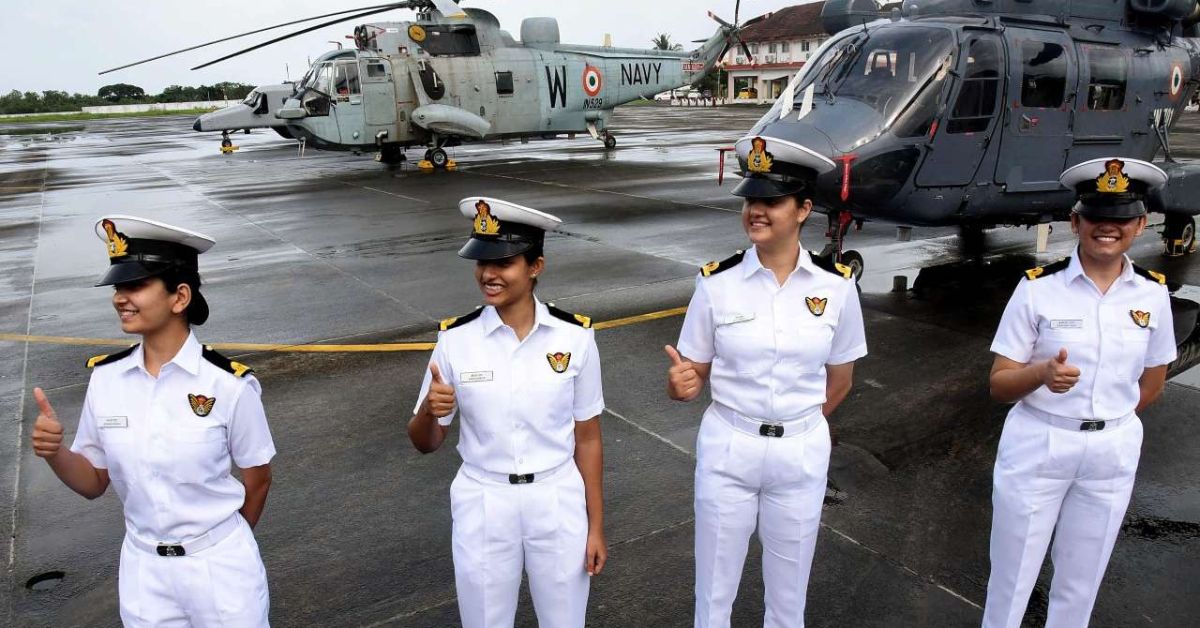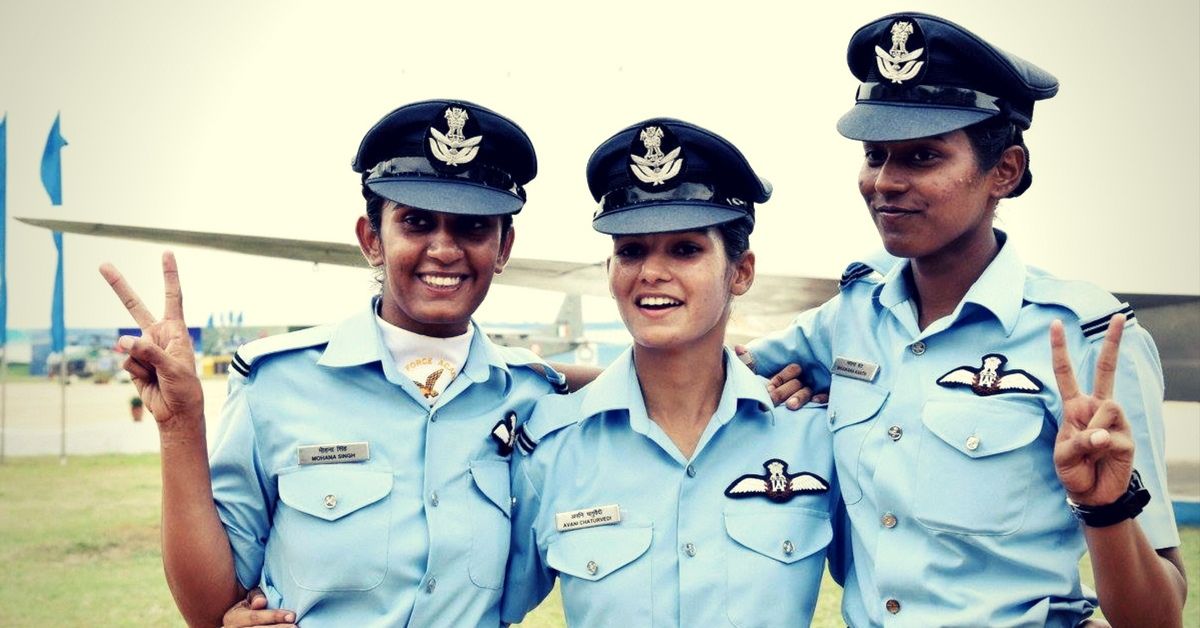Where & How Did India’s 1st Female Naval Fighter Pilot Begin Her Journey?
Every time a plane roared across the skies of Meerut, a young Aastha Poonia would rush outside, eyes filled with wonder.
That childhood dream took flight on 3 July 2025, when Sub Lieutenant Aastha Poonia was inducted into the Indian Navy’s fighter stream, earning her ‘Wings of Gold’ at a commissioning ceremony at INS Dega, Visakhapatnam.
At just 24 years old, she’s now set to fly some of the Navy’s most advanced warplanes, including the MiG-29K, a supersonic jet launched from aircraft carriers like INS Vikrant.
This isn’t just a personal achievement — it’s a national milestone. Aastha is the first-ever woman fighter pilot in Indian naval history, breaking through the final frontier of gender-restricted roles.
It’s important to understand just how significant this moment is.
For decades, the Indian Navy, like other military branches, followed a gender-restrictive model; women could serve, but only in limited, non-combat roles.
How Sub Lt Aastha Poonia earned her wings
Becoming a fighter pilot in the Indian Navy is no ordinary journey. It involves clearing multiple levels of academic, physical, and operational training, especially for women, who only recently began entering combat aviation roles.
Here’s a closer look at how Sub Lt Aastha Poonia achieved this historic feat:
Basic military and naval training
Before touching a cockpit, every officer undergoes basic military training, which includes:
- Leadership development
- Physical fitness drills
- Naval discipline and protocol
- Foundational knowledge of maritime operations and national defence
While Aastha’s early officer training details have not been publicly shared, it is standard for all Indian Navy officers, men and women, to go through induction at institutions like the Indian Naval Academy (INA) in Ezhimala, Kerala. This initial phase lays the groundwork for specialised roles such as flying.
Second Basic Hawk Conversion course – INS Dega, Visakhapatnam
Aastha recently graduated from the prestigious Second Basic Hawk Conversion Course at INS Dega, one of the Navy’s premier air stations in Visakhapatnam.
- The course is conducted on the Hawk 132 jet trainer aircraft — a twin-seat, subsonic aircraft used to train fighter pilots in handling high-performance jets.
- The programme covers:
- Advanced flying maneuvers
- Tactical combat techniques
- Operational proficiency in simulated battle scenarios
By completing this course, Aastha proved her ability to handle sophisticated fighter aircraft. She was awarded the coveted ‘Wings of Gold’, symbolising her formal induction as a fighter pilot in the Indian Navy.
Induction into the fighter stream
Unlike earlier female officers who flew helicopters or maritime reconnaissance aircraft, Aastha chose to cruise into the fighter stream — a specialisation reserved for the most capable pilots.
This means she’s now qualified to fly frontline combat jets like the MiG-29K, which operate from aircraft carriers, such as INS Vikrant and INS Vikramaditya.
Being in the fighter stream demands:
- Excellent physical stamina
- Mental agility
- Split-second decision-making under pressure
- The ability to operate in high-G force environments
Her entry into this elite group signifies not just skill, but extraordinary resilience and mental strength.
 As of July 2025, women make up 6.5% of the Indian Navy’s workforce — the highest among all three armed services. Picture source: Kargil Defence Academy
As of July 2025, women make up 6.5% of the Indian Navy’s workforce — the highest among all three armed services. Picture source: Kargil Defence Academy
The Navy’s path toward gender neutrality
Over the past few decades, the Indian Navy has made remarkable progress in embracing gender equality and inclusivity.
Here’s how the Navy has evolved:
- In 1992, Women were inducted as Short Service Commission (SSC) officers for the first time in non-medical branches like Education, Law, and Logistics. Before this, women could only join the Medical Branch.
- Women now serve in technical and leadership roles and even operate maritime reconnaissance aircraft and helicopters.
- The Indian Navy has opened the Special Forces (MARCOS) to women, but with some important conditions:
- In 2021–2022, the Indian Navy officially began allowing women to volunteer for the elite Marine Commandos (MARCOS), also known as the Navy’s special forces.
- However, this is not through direct entry. Women officers can opt for MARCOS only after joining the Navy, and must volunteer for special forces training.
- They must then clear the same extremely tough selection process and physical standards as their male counterparts, which very few candidates (of any gender) qualify for.
- Entry points for women include:
- Permanent Commission (PC) through the National Defence Academy (NDA), and the Indian Naval Academy (INA). and 10+2 B.Tech Entry
- Short Service Commission (SSC) in various branches
- Entry as Agniveer (SSR) and Agniveer (MR) under the Agnipath Scheme
Where do women stand today in the forces?
As of July 2025, women make up 6.5% of the Indian Navy’s workforce — the highest among all three armed services, according to government data shared in the Rajya Sabha.
Here’s a quick comparison:
While these numbers are still small, they’re steadily rising, and every success story like Aastha’s sends a strong message: the forces are evolving.
Other trailblazers who’ve broken barriers
 Avani Chaturvedi, Bhawana Kanth and Mohana Singh were commissioned as flying officers. Picture source: Facebook
Avani Chaturvedi, Bhawana Kanth and Mohana Singh were commissioned as flying officers. Picture source: Facebook
Aastha joins a league of fearless Indian women who’ve shattered norms in the armed forces:
- Avani Chaturvedi (IAF): One of the first women fighter pilots in the Indian Air Force, flew solo in a MiG-21 Bison in 2018.
- Bhawana Kanth: Another IAF fighter pilot, and the first Indian woman eligible to take part in combat missions.
- Shivangi Singh: First woman fighter pilot to fly the Rafale, India’s most advanced jet.
- Lt Commander Aanchal Sharma: Among the first women posted onboard Indian Navy warships
- Lt Payal Gupta: A trailblazer in helicopter operations with the Navy.
And now, Sub Lt Aastha Poonia carries the baton forward, as the first to take on fighter jet operations in naval aviation.
If Aastha’s story has inspired you, visit the Indian Navy’s official website to explore how you too can serve the nation.
News